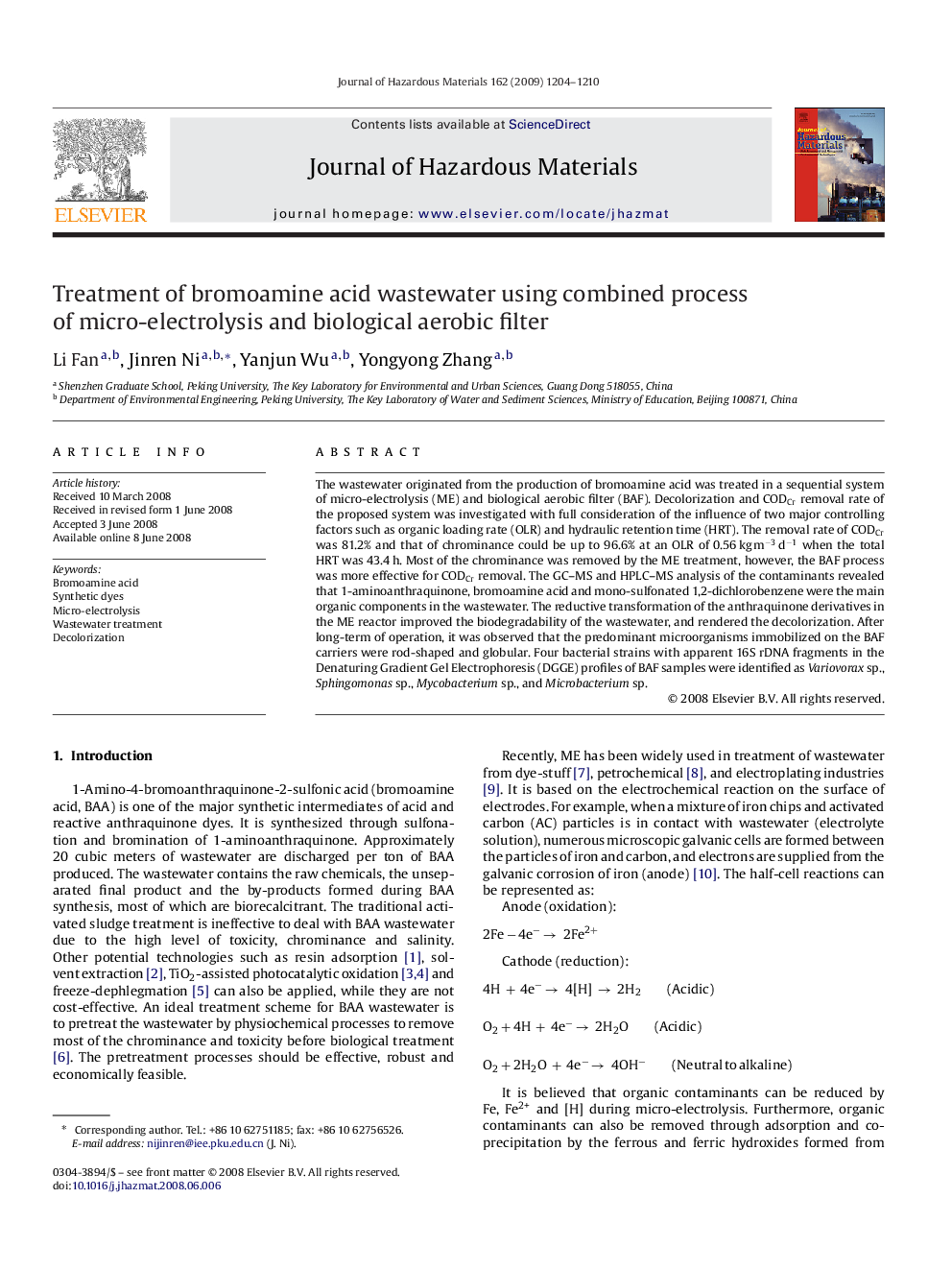| Article ID | Journal | Published Year | Pages | File Type |
|---|---|---|---|---|
| 582423 | Journal of Hazardous Materials | 2009 | 7 Pages |
Abstract
The wastewater originated from the production of bromoamine acid was treated in a sequential system of micro-electrolysis (ME) and biological aerobic filter (BAF). Decolorization and CODCr removal rate of the proposed system was investigated with full consideration of the influence of two major controlling factors such as organic loading rate (OLR) and hydraulic retention time (HRT). The removal rate of CODCr was 81.2% and that of chrominance could be up to 96.6% at an OLR of 0.56 kg mâ3 dâ1 when the total HRT was 43.4 h. Most of the chrominance was removed by the ME treatment, however, the BAF process was more effective for CODCr removal. The GC-MS and HPLC-MS analysis of the contaminants revealed that 1-aminoanthraquinone, bromoamine acid and mono-sulfonated 1,2-dichlorobenzene were the main organic components in the wastewater. The reductive transformation of the anthraquinone derivatives in the ME reactor improved the biodegradability of the wastewater, and rendered the decolorization. After long-term of operation, it was observed that the predominant microorganisms immobilized on the BAF carriers were rod-shaped and globular. Four bacterial strains with apparent 16S rDNA fragments in the Denaturing Gradient Gel Electrophoresis (DGGE) profiles of BAF samples were identified as Variovorax sp., Sphingomonas sp., Mycobacterium sp., and Microbacterium sp.
Related Topics
Physical Sciences and Engineering
Chemical Engineering
Chemical Health and Safety
Authors
Li Fan, Jinren Ni, Yanjun Wu, Yongyong Zhang,
